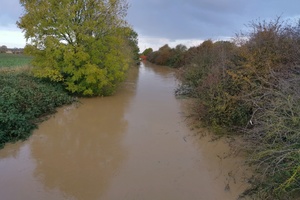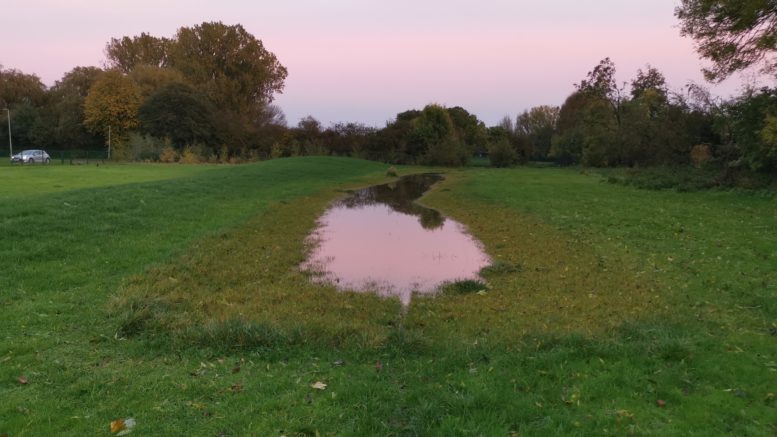Plans to create a large ‘aquagreen’ to reduce flood risk to homes and businesses near Bransholme in east Hull have been submitted for planning approval.
A public consultation was launched in September 2020 on proposals for a versatile green space, south of the old Bransholme Dairy Farm, that will store excess water during a flood and then slowly release it back into the drainage system after the peak of the flood has passed.
Now that feedback from the community and partners has been considered, plans have been revised and submitted to Hull City Council and East Riding of Yorkshire Council for approval.
Homes in North Carr and Sutton are currently at risk of flooding from water in the Holderness and Sutton Cross drains after heavy rain. The Holderness Drain is a man-made river channel. When it becomes full, water flows into Sutton Cross Drain, overwhelming the local drainage system and increasing the risk of flooding for homes in the area. This area almost flooded in November 2019 when other parts of Hull were hit.
If approved, the ‘aquagreen’ will be the second phase of the £28.5m Holderness Drain Flood Alleviation Scheme, following construction of the new East Hull Pumping Station, which started earlier last year.

Holderness Drain
Andrew Barron, Environment Agency flood risk advisor for Hull, said: “Last year’s consultation was a really useful opportunity to talk to the community to get their local knowledge to help influence and improve our proposals for Castlehill.
“We are now in a position to submit our final plans for this scheme, which will significantly reduce the likelihood of flooding for properties in the North Carr and Sutton areas of Hull by storing flood water in the aquagreen.
“Under normal weather conditions, the site will not hold water which gives us an ideal opportunity to create a more attractive green space that people can enjoy spending time in.
Councillor Mike Thompson, portfolio holder for Neighbourhoods, Community and the Environment at Hull City Council, said: “It is exciting and I’m proud to see this phase of the Holderness Drain FAS progressing to the next stage. The scheme offers not just a reduction in flood risk, but also helps the city adapt to the increasing challenges of climate change and provides more reassurance to families.
“The scheme will also provide local people with more opportunities for walking and enjoying the outdoor environment, an element that has become so important to us all in the last year, and the value this brings in terms of our health and wellbeing shows that we need to take greater care of our natural environment.”
The construction of the ‘aquagreen’ will involve digging an extra drain, east of Sutton Cross Drain, building a new embankment beside it and digging a long wide ditch at the southern end of the site to increase the capacity for temporarily storing water during a flood.
Once a flood is over, most of the water will drain away although the site is designed to remain wet in some areas. As part of the plans, several low spots will be raised on both sides of the Holderness Drain to reduce the risk of flood water spilling out onto the land next to the drain.
To read the full proposals, visit the Environment Agency website.




